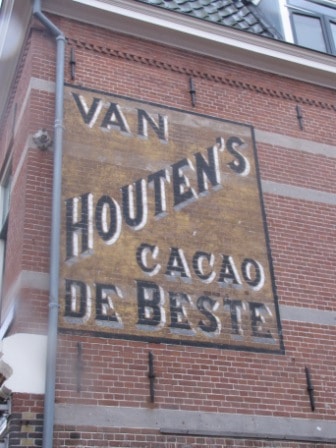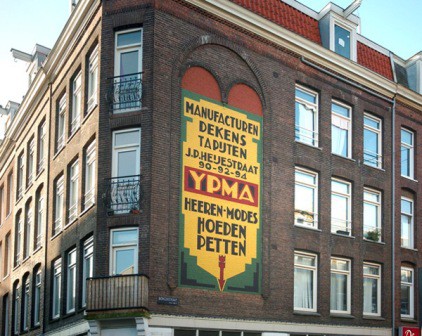9 Mar 2012
Writing on the Wall working to preserve and restore ghostsigns in the Netherlands
This organisation in the Netherlands was established in 1999 and has been working ever since to raise the profile of hand painted wall advertising in the country. They also get involved with other outdoor forms such as hanging signs and neon advertisements, but the main focus is Ghostsigns, especially their restoration and protection. A lot of their work is coordinated through local historical and cultural societies, much the same as in the USA. One of these, and their work, featured in last year’s ‘world tour‘.
This 2009 article [Link expired], pushed through Google Translate, offers some good background on the work of Writing on the Wall. This includes reference to a book which it now appears will be published soon so I’ve enquired about how to get a copy. There is also mention of a film about a specific restoration job so that is also on my ‘wishlist’.
One of the interesting things about the organisation is the way they approach restoration work in a ‘responsible’ way. This includes, “historical research, technical examination of the facade itself, determining who the owner is, accounting for government legislation relevant to the location etc”. The work itself is also led by their members with the necessary technical skills and here is a photo essay of the various stages involved in this work [Link expired]. I wonder to what extent these considerations were applied in the cases of some of the signs highlighted in this previous blog post? There is also an example of legislation to govern restoration work from the USA so perhaps there will soon be some agreed international standards for this kind of thing.
The other aspect of their work is seeking protection for signs of note and, in the case of the Hague, this has been successful with at least three being awarded listed status. However, it appears that they face a similar barrier to this work as we have in the UK, namely that ghostsigns tend to fall into a black hole with respect to the means through which they could be protected. This is because they’re not integral to the architectural features of the building, they can’t be removed for storage elsewhere and, despite their unexpected longevity, they are essentially ephemeral in nature. It will be interesting to see what happens in Hackney as a result of this initiative.
Once again I am drawn to the same conclusion which is that the best things to do for the signs is to record them photographically and to raise their profile so that property owners perceive value in what are often antiques painted onto the walls of their buildings. This value continues to be demonstrated to me by the enthusiasm and endeavour of organisations such as Writing on the Wall and individuals across the world.





